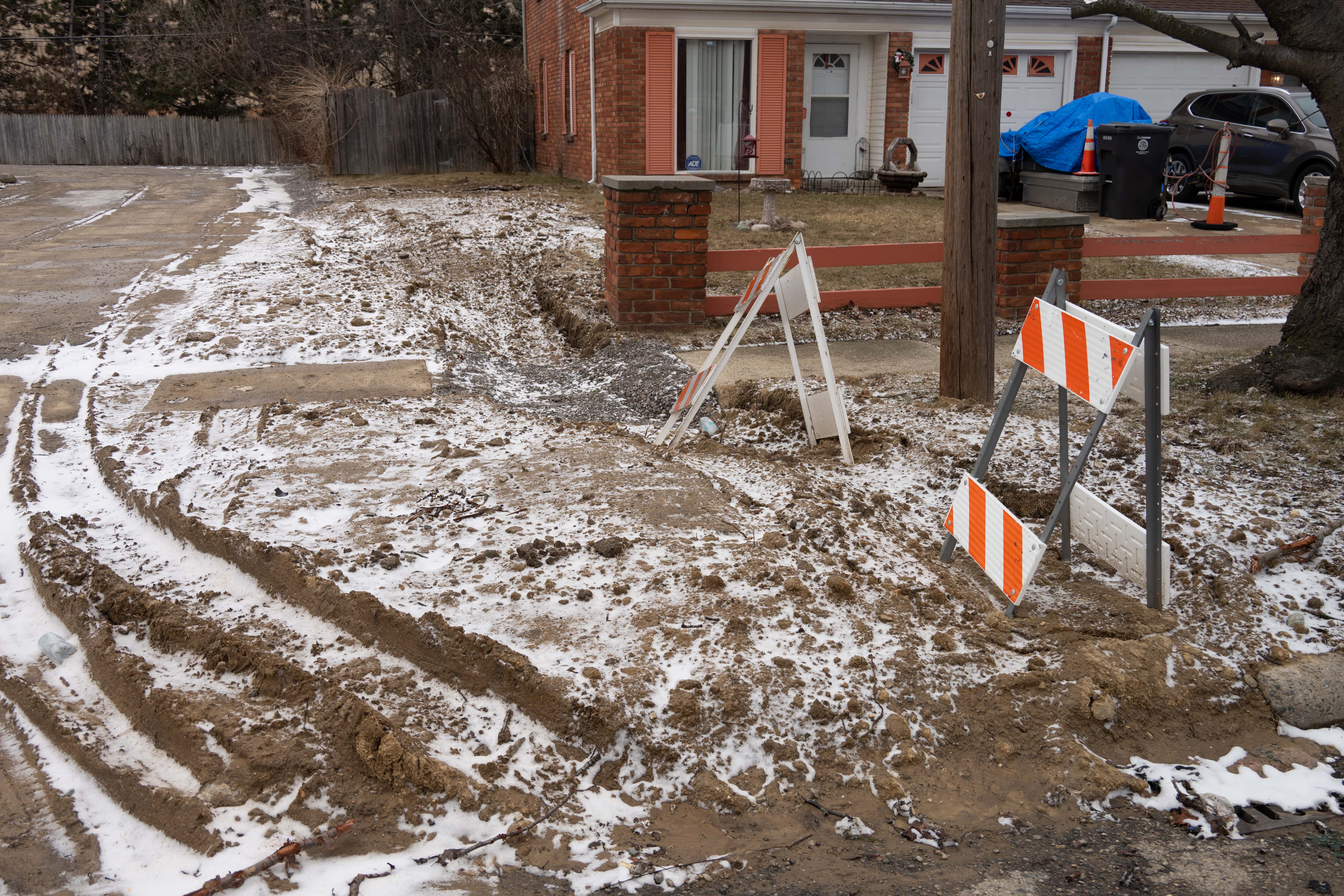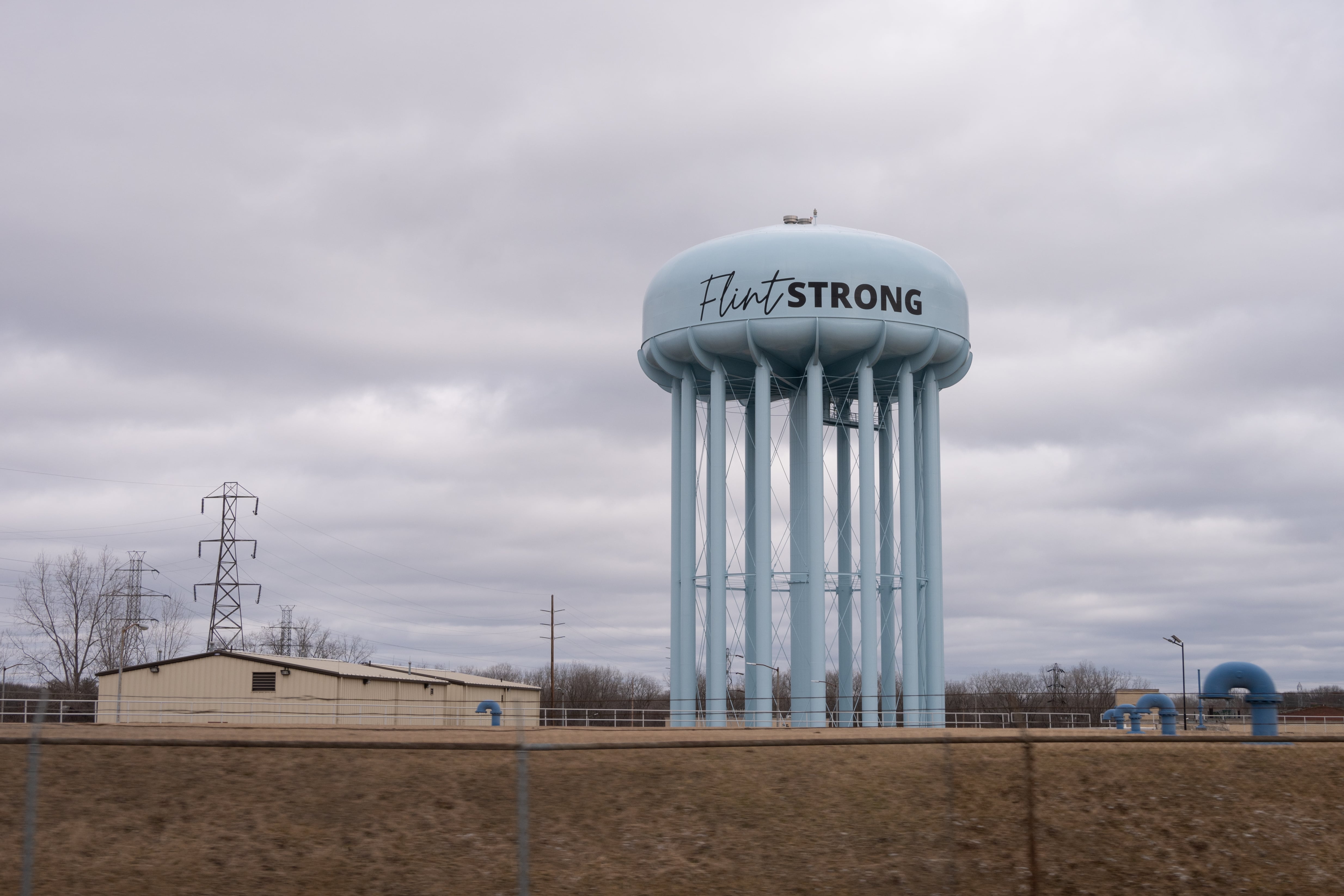
FLINT — Despite bipartisan support for a new law enacted by the Biden administration to replace all lead drinking pipes within a decade, Trump Republicans are trying to dismantle the directive, putting it and billions of dollars allocated for the public health initiative in jeopardy.
The 2024 Lead and Copper Rule Improvement law, or LCRI, requires that states replace all lead drinking pipes by 2037, funded by the 2021 Bipartisan Infrastructure Law, which has since been distributing $15 billion to states over five years. But Republicans are attempting to roll back the initiative through what’s called the Congressional Review Act, a 60-day window to repeal laws from when they are enacted. If that happens, the plan would be permanently foiled.
“If that were to pass, it would not only nullify the rule, but it would also prohibit EPA in the future from ever adopting the same or a similar rule,” said Larry Levine, a senior attorney of Environmental Health at the National Resource Defense Council (NRDC) and a leading voice on water quality and infrastructure.
Experts say rolling back LCRI would default pipe replacement to a policy called the Lead and Copper Rule Revisions, a far inferior alternative introduced during Trump’s Administration in 2019.
“The Lead and Copper Rule Revisions that were adopted under the first Trump administration were far too weak… in fact, the EPA did its own analysis, finding under that version of the rule, 95% of lead service lines would never have to be replaced,” said Levine.
The remainder of the $15 billion in funding put in place for pipe replacement – which has paid out $9 billion and has $6 billion remaining for the next two years – technically cannot be removed, but with Trump’s massive federal cuts, the remaining funds that haven’t been issued could be frozen.
“Conceivably, the Trump administration could try to withhold that money in some way, like they've been withholding other money that Congress has appropriated. But to date, they've not tried to do that,” said Levine, who referenced March 26 testimony from EPA Assistant Administrator Jessica Kramer, who announced the agency has no interest in repealing funding for lead pipe replacement and that what was frozen when the new administration came in has since been released to states. “We intend to hold them to that.”
But Levine worried that Trump and Elon Musk’s Department of Government Efficiency (DOGE) could even attempt to “claw back money that's already been paid out” to states.
“President Trump has claimed for himself the authority to decide whether or not to spend money that Congress has appropriated… We believe that's illegal, but that's what he's been attempting to do,” said Levine. Any success in deregulation, he added, puts communities at risk of continued exposure to lead.
In 2015, the world came to learn of the danger of lead drinking pipes after state-appointed emergency managers transitioned the city of Flint, Michigan’s water from Lake Huron to the nearby Flint River without the permission of residents or city council. This cost-saving move caused an outbreak in Legionnaire’s disease and the leaching of lead through old and corroding water pipes that fed to tens of thousands of unsuspecting residents.
But the Flint Water crisis was only the latest chapter in a series of flailing water systems across the country. From 2002 to 2004, corrosion of water infrastructure in Washington, D.C. brought lead levels in 10% of homes over the EPA’s lead action level at 15 parts per billion, according to a report from DC Water. Then in 2014, Pittsburgh saw similar corrosion to Flint after a cost-cutting measure resulted in the wrong treatment.
All three crises developed in areas with an aging lead pipe infrastructure, the effects of which left residents to deal with lifelong physical and mental problems, especially children who are highly susceptible to absorbing lead in their developing organs and bones. Even with proper corrosion treatment, experts are concerned that blocking replacement leaves communities that are dependent on lead and galvanized steel service lines – those have a layer of lead coating – exposed to leaching.
“Corrosion control is just an attempt to try and mitigate what is thermodynamically favorable,” said Susan Masten, a civil and environmental engineering professor at Michigan State University who in 2021 was appointed to the Michigan Department of Environment, Great Lakes, and Energy Corrosion Control Advisory Panel. She explained that the inside of pipes will corrode if they are unstable, which leaves their interior in direct contact with water.
“So you've got a pipe under the road, some sort of excavation, a large truck that's going to part a load, you've got vibrations from construction; all that can impact that inside of the pipe,” said Masten, who shared that even with a 50- to 100-year lifespan, pipes fail all the time. “Anytime you go in and you fix it, now you've got a vibration. Potentially you somehow crack or release some of that passivation layer. Now you've got free metal. Now you have greater potential for corrosion.”
Experts say that the neurotoxin doesn’t just flow in and out of a water system once it leaches from a pipe. Instead fragments can get trapped.

“Little chips get in the water, into the aerator in the kitchen sink – the little thing on the end of the faucet that looks like a screen so that they can sit in there forever. So every glass of water goes through that,” said Mary Jean Brown, former chief of the Healthy Homes and Lead Poisoning Prevention Branch at the U.S. Centers for Disease Control and Prevention.
The risk of lead pipe leaching is affecting more than Flint, D.C. and Pittsburgh. The Environmental Protection Agency estimated that 9 million lead service lines remain in use nationally – as of a 2023 survey of state officials and utility companies – threatening to poison the most vulnerable with the neurotoxin across wide swaths of the country. If Republicans succeed in repealing regulation or finding a way to remove funding, there would be little that can be done to require water utility companies to pay for pipe replacement.
Lead’s health effects, costs and benefit of removal
Flint’s lead pipes were hit with highly corrosive water that was so caustic General Motors stopped using it to build its engines. Imagine how much worse the water was for humans, and especially kids, experts say. The adverse effects of lead exposure is more extreme in early-childhood development, where critical minerals like calcium and iron are more easily confused by the body with lead.
“There's something called the blood brain barrier – which is the barrier between spinal fluid and the fluid in your brain and your blood – and it prevents bacteria and other kinds of bad stuff, mostly bad kinds of protein, from hopping from your blood to your brain in very small children and fetal development,” said Brown, who explained that the neurotoxin tends to mimic calcium – both form an ion with a charge of 2+ – so the blood barrier struggles to filter the neurotoxin from entering the brain.
While lead can trap itself more easily in young children, it continues to release throughout a person’s lifetime. Even though the EPA established the action level at 15 ppb, a threshold that the agency sets for states, experts say there is still no safe lead level for water, and that there is still no specific blood-lead threshold in children – which means the lead level has to be zero to be safe to drink.
“We have to have enough respect for this toxic chemical to prevent exposure from happening, and the only way to do that is to take lead out of whatever you can take it out of and not put any more of it back into the system,” said Brown.
Experts believe that the benefit of investing in lead pipe replacement far exceeds the cost, and that the EPA drastically underestimated its value. A 2023 study written by Ronnie Levin, a professor of environmental health at Harvard T.H. Chan School of Public Health, explained that the investment will net 35 times its cost – meaning communities end up saving money and earn more in their lifetime by not having to deal with health effects from exposure to toxic water.
The professor explained that the EPA only accounts for one of 20 EPA-listed health and non-health benefits that would come from lead pipe replacement.
“The thing that's so ridiculous about [the study] is they came with the one thing that they monetize. They put a dollar value on the long-term effect of poisoning kids when they're little, so that in their lifetimes, they end up making less money. Well, they have to be 70 years old before you can assess what the lifetime damage is,” said Levin.
Who’s behind lead pipe replacement deregulation and defunding
In March, in what the EPA Administrator Lee Zeldin called “the biggest deregulatory action” in history, the government rolled back scores of regulations under the Clean Air Act and Clean Water Act, among other basic environmental laws. The release didn’t list safe drinking water rules, and experts say that so far the administration has not taken any actions to change lead pipe replacement regulations.

At the same time, water utility lobbyists and legislators in Congress have been attempting to cut the pipe replacement regulation. A week before President Trump’s inauguration, U.S. Reps. Gary Palmer and Andrew Clyde introduced resolutions under the Congressional Review Act to repeal the law.
These congressional efforts come after several water utility companies came forward against the LCRI when the EPA launched it. The American Water Works Association – a non-profit group representing 4,300 companies that cover 80% of North America’s drinking water and treat almost half of North America’s wastewater – sued in federal court in December 2024 to challenge the rule, estimating that replacement would cost over $90 billion, according to the agency’s statement of justification.
“Those numbers are overblown,” said Levine, who referenced an independent review on the estimate, conducted by Detroit-based drinking water consultant Safe Water Engineering. “[It] frankly is pretty disgraceful that this association of water utilities, whose job is protecting health by providing people with safe water, ran to federal court to sue over replacement of lead pipes from the ground that deliver water to people.”
In a release about the lawsuit, the AWWA made several arguments against the LCRI, stating the 2037 deadline does not give enough time to water utility companies, will raise costs for water users and will not be able to replace pipes on private property.
“They're ignoring things that they can do to bring costs down further,” said Levine, who added that telling the public that water prices are going to rise and become unaffordable after this fix is a scare tactic. “They are ignoring things that they can do to ensure that low-income households are able to afford their water bills, even as rates go up over time to pay for the whole range of infrastructure investments that are needed.”
Experts add that the analysis avoids the cost of caring for a failing infrastructure across the nation.

“There is a water main break every two minutes in the United States because our infrastructure is so old, so replacing these pipes is also a good thing because it saves a water main from breaking,” said Levin, the public health professor. Water main breaks can cost hundreds to several thousands of dollars to fix. “Not only is it really expensive to fix it when it's gushing 10,000 gallons an hour, but it does damage to the road and under the road and it stops traffic and it's bad for the electrical system,” he added. “Avoiding a water main break is a good thing…replacing pipes that are 140 years old is a good thing.”
Deregulation would leave communities that are dependent on lead water systems vulnerable to what happened in Flint, D.C. and Pittsburgh. In addition, lower-income residents will need to pay for replacement, or may never discover they have lead pipes in the first place.
Without the LCRI, experts predict that states will not be motivated to apply for and use lead pipe replacement funding, which means none of the aging infrastructure is replaced like it should be.
“It's time to let 'em go…it’s not like we're ripping out all this stuff at the height of this utility,” said Levin. “These pipes are already 140 years old, so when they were put in the service, their life expectancy was only 50 years.”
